When it comes to designing a kitchen, lighting is one of the most crucial aspects that can significantly influence both functionality and aesthetics. A well-planned kitchen lighting layout can enhance the space, making it more inviting, practical, and visually appealing. Proper lighting not only highlights the kitchen’s design features but also ensures safety and efficiency. To achieve an effective kitchen lighting plan, it’s important to consider various types of lighting, the placement of fixtures, and the specific needs of different kitchen zones. Understanding these elements helps create a balanced and well-lit environment, perfect for cooking, dining, and entertaining.
The first consideration in kitchen lighting is task lighting, which is essential for illuminating workspaces where food preparation and cooking take place. Areas such as countertops, kitchen islands, and the stove should be well-lit to ensure visibility while cutting, chopping, or cooking. Under-cabinet lighting is an excellent choice for task lighting as it directly illuminates the countertop surface, reducing shadows and providing bright, focused light. LED strips or puck lights are popular options for under-cabinet lighting, offering energy efficiency and a sleek, modern look. These lights are typically installed under the upper cabinets to shine directly on the countertops.

Ambient lighting serves as the general illumination for the kitchen, providing overall light that fills the room. It creates a warm and inviting atmosphere, ensuring the space is comfortably lit. Ceiling-mounted fixtures, such as recessed lights or flush mounts, are commonly used for ambient lighting. Recessed lighting, also known as can lights, is particularly effective for kitchens with low ceilings as they are installed within the ceiling itself, providing a clean and unobtrusive look. For kitchens with higher ceilings, chandeliers or pendant lights can add both style and sufficient illumination, contributing to the room’s overall character.
Accent lighting plays a pivotal role in highlighting specific features or architectural elements in the kitchen. This type of lighting draws attention to areas like a beautiful backsplash, a collection of glassware, or open shelving. Accent lighting can be achieved with adjustable track lights or directional recessed lights that focus light precisely where it’s needed. Moreover, accent lighting can create a layered lighting effect, adding depth and dimension to the kitchen. When combined with ambient and task lighting, accent lighting helps create a balanced and harmonious lighting scheme.

One of the trending ideas in kitchen lighting is the use of pendant lights over kitchen islands or dining areas. Pendant lights come in various shapes, sizes, and materials, making them versatile for different kitchen styles, whether modern, rustic, or traditional. These lights not only provide task lighting for the island but also serve as a decorative element, making a bold design statement. The height at which pendant lights are hung is crucial; they should be positioned to provide adequate illumination without obstructing the view or causing glare. Typically, pendant lights are hung 30 to 36 inches above the countertop.
Natural lighting is another important element that can be incorporated into the kitchen lighting plan. Maximizing natural light can make the kitchen feel more spacious and airy. Large windows, skylights, or glass doors are great options for bringing in daylight. The placement of these openings should be considered during the kitchen layout planning to ensure they provide the maximum amount of light throughout the day. Moreover, using light-colored walls, cabinets, and countertops can help reflect natural light, further enhancing the brightness of the space.

The kitchen’s color scheme can also influence the choice of lighting. Light-colored kitchens often benefit from warmer light temperatures, which add a cozy and inviting feel, while darker kitchens might require cooler, brighter lights to ensure visibility and contrast. LED lighting is a popular choice due to its energy efficiency, long lifespan, and availability in various color temperatures. Choosing the right light temperature can create the desired ambiance and complement the kitchen’s design.
For a kitchen with an open floor plan, the lighting layout should be coordinated with the adjoining spaces to ensure a cohesive look. For instance, the lighting in the kitchen should transition smoothly into the dining or living areas, creating a unified flow. This can be achieved by using similar lighting fixtures or complementary styles that tie the spaces together. Additionally, using dimmers on the lights allows for adjustable brightness, catering to different activities or moods, from bright task lighting for cooking to softer lighting for dining or entertaining.
Under-cabinet lighting isn’t just for task purposes; it can also serve as accent lighting, highlighting beautiful countertops or adding a soft glow to the kitchen. LED tape lights installed along the bottom of cabinets can create a floating effect, making the kitchen appear modern and sleek. This subtle lighting not only enhances the kitchen’s design but also provides low-level illumination at night, making the space more functional and safe without the need for overhead lights.
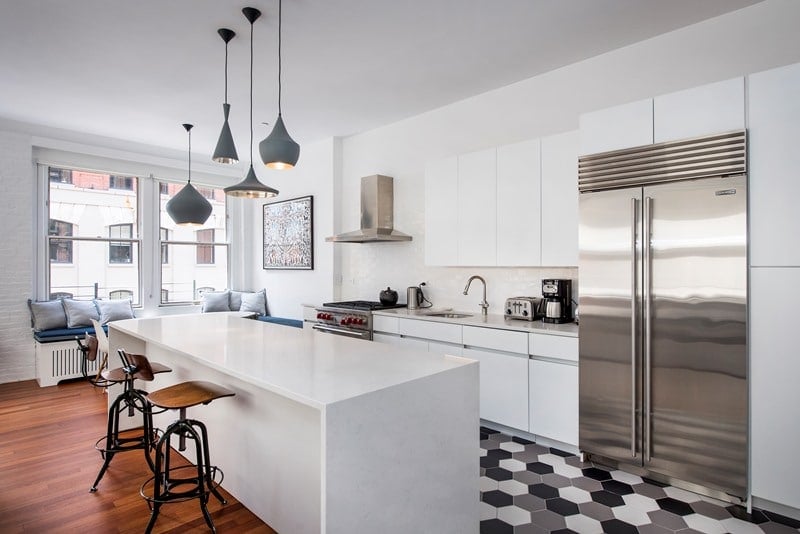
Toe-kick lighting is an innovative way to add ambient lighting to the kitchen. Installing LED strips along the base of cabinets can create a soft glow that illuminates the floor. This type of lighting is particularly useful for nighttime navigation, offering a gentle light that doesn’t disrupt the overall atmosphere. Toe-kick lighting can also add a touch of luxury and sophistication to the kitchen, highlighting the design and materials used in the cabinetry.
Incorporating smart lighting systems into the kitchen allows for greater control and convenience. With smart lighting, homeowners can adjust the brightness, color temperature, and even the color of the lights using a smartphone or voice commands. This technology can be integrated with other smart home devices, creating a seamless and connected home environment. Smart lighting can also include motion sensors that turn lights on and off automatically, adding an extra layer of convenience and energy efficiency.
Layered lighting is a key principle in kitchen lighting design, involving a combination of ambient, task, and accent lighting. Each layer serves a different purpose and, when used together, creates a versatile and dynamic lighting scheme. For instance, ambient lighting provides general illumination, task lighting focuses on specific work areas, and accent lighting adds depth and highlights features. This approach ensures the kitchen is well-lit and functional for various tasks while also being aesthetically pleasing.

Another creative kitchen lighting idea is the use of cove lighting, where lights are installed in a recessed area such as a ceiling or wall niche. Cove lighting directs light upwards or downwards, creating a soft, diffused glow that adds to the ambiance. This type of lighting is ideal for modern kitchens, where clean lines and minimalistic designs are prominent. Cove lighting can also be used to highlight architectural details, such as tray ceilings or crown molding, adding to the kitchen’s visual interest.
Choosing the right light fixtures for the kitchen is crucial in achieving the desired look and functionality. It’s important to consider the style, size, and material of the fixtures, ensuring they complement the kitchen’s design. For a cohesive look, the lighting fixtures should match or coordinate with other elements in the kitchen, such as the cabinetry hardware, faucet, or appliances. Mixing different styles or finishes can create a unique and personalized look, but it should be done thoughtfully to avoid a disjointed appearance.
Energy efficiency is another important factor to consider when planning kitchen lighting. Using energy-efficient bulbs, such as LEDs, can significantly reduce energy consumption and lower utility bills. LEDs are available in various brightness levels and color temperatures, making them suitable for different lighting needs in the kitchen. Additionally, using lighting controls, such as dimmers and timers, can further enhance energy efficiency, allowing homeowners to adjust the lighting according to their needs.
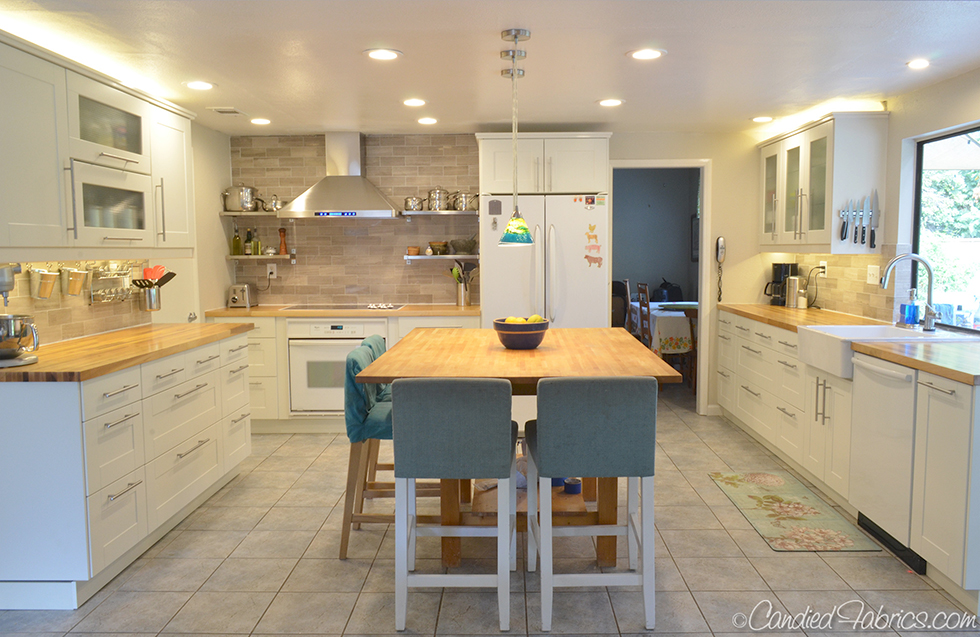
Common Mistakes to Avoid
When planning kitchen lighting, one common mistake is neglecting to layer the lighting. Relying solely on a single light source, such as an overhead fixture, can result in a poorly lit kitchen with shadows and dark spots. It’s important to incorporate a combination of ambient, task, and accent lighting to ensure the kitchen is well-lit and functional.
Another mistake is ignoring the importance of task lighting. Insufficient task lighting can make it difficult to perform kitchen tasks safely and efficiently. Under-cabinet lighting and properly placed pendant lights can significantly improve task visibility.
Another frequent mistake is choosing the wrong light temperature or color. The wrong lighting color can make the kitchen feel cold, uninviting, or unflattering. It’s important to select the right color temperature that complements the kitchen’s color scheme and design. For instance, warmer light temperatures create a cozy ambiance, while cooler temperatures offer a more modern and bright look.
Also, failing to consider the placement and height of light fixtures can lead to glare, insufficient lighting, or obstructions. Proper placement ensures lights provide adequate illumination without causing discomfort or visual disturbances.

Why is layered lighting important in a kitchen?
Layered lighting is important in a kitchen because it provides a balanced and versatile lighting scheme. By combining ambient, task, and accent lighting, homeowners can ensure that the kitchen is well-lit for various activities, from cooking and cleaning to dining and entertaining. Layered lighting helps eliminate shadows and dark spots, making the kitchen safer and more functional. It also adds depth and dimension, enhancing the overall aesthetics of the space.
What is the best type of lighting for kitchen islands?
Pendant lights are often considered the best type of lighting for kitchen islands. They provide focused task lighting, making it easier to prepare food, cook, or dine on the island. Pendant lights also serve as a decorative element, adding style and personality to the kitchen. When choosing pendant lights, it’s important to consider the size, height, and spacing to ensure they provide adequate illumination without obstructing the view or causing glare.
How can I make my kitchen more energy-efficient with lighting?
To make a kitchen more energy-efficient with lighting, consider using LED bulbs, which consume less energy and have a longer lifespan than traditional incandescent bulbs. Additionally, installing dimmers allows for adjustable brightness, reducing energy consumption when full brightness is not needed. Using lighting controls, such as timers and motion sensors, can further enhance energy efficiency by ensuring lights are only used when necessary.

What are some creative ways to incorporate accent lighting in the kitchen?
Creative ways to incorporate accent lighting in the kitchen include using under-cabinet lighting to highlight beautiful countertops or backsplashes, installing LED strips along the toe-kick of cabinets to create a soft floor glow, and using track lighting to draw attention to artwork or architectural features. Accent lighting can also be used inside glass-front cabinets to showcase decorative items or glassware, adding visual interest and elegance to the kitchen.
How high should pendant lights be hung above a kitchen island?
Pendant lights should typically be hung 30 to 36 inches above the kitchen island countertop. This height ensures that the lights provide adequate illumination for tasks without obstructing the view or causing glare. The exact height may vary depending on the height of the ceiling and the size of the pendant lights, but maintaining this range is a good rule of thumb for most kitchens.
Can natural light be used effectively in kitchen lighting design?
Yes, natural light can be used effectively in kitchen lighting design. Incorporating large windows, skylights, or glass doors can bring in ample daylight, making the kitchen feel brighter and more spacious. Natural light is not only energy-efficient but also creates a pleasant and inviting atmosphere. The placement of these openings should be carefully planned to ensure they provide maximum light throughout the day, and the use of light-colored materials can help reflect natural light, enhancing the overall brightness of the space.
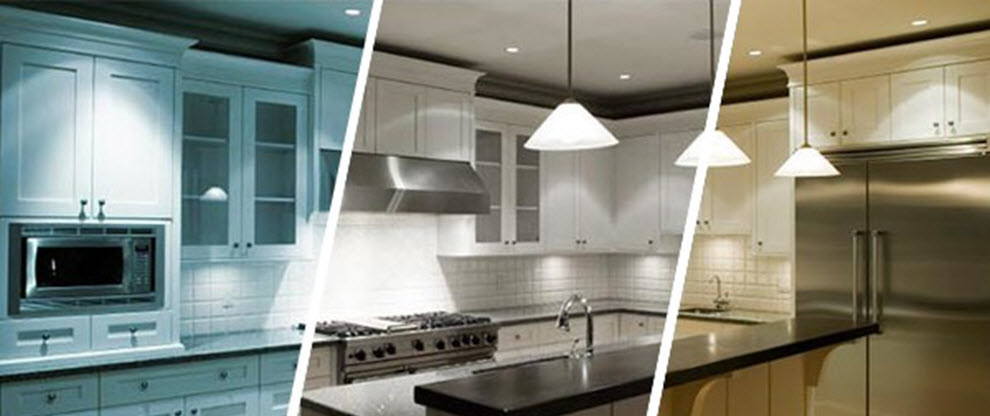
Country kitchen lighting, French country

Peninsula Kitchen Design: Pictures, Ideas & Tips
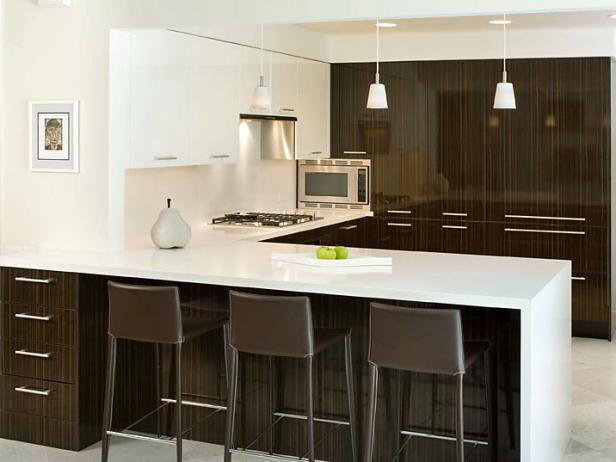
Clean white shaker One wall kitchen, Small apartment kitchen

Awesome Farmhouse Kitchen Design And Ideas To Try
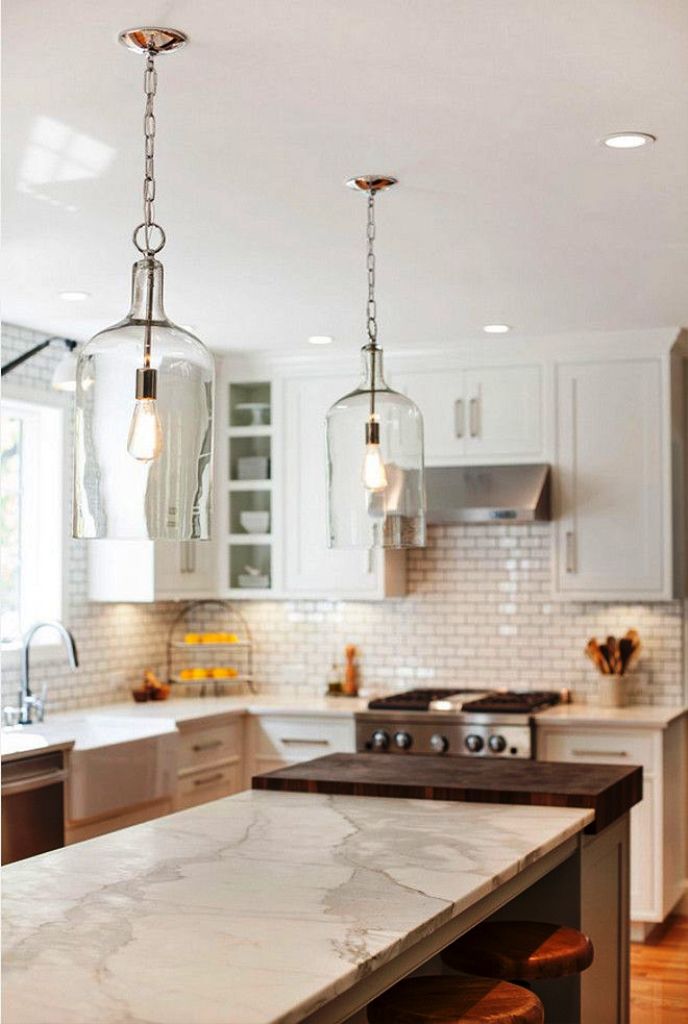

Related Posts:
- How To Wire Under Cabinet Lights In Kitchens
- Country Kitchen Chandelier Lighting
- Discount Pendant Lighting Kitchen
- Candice Olson Kitchen Lighting
- Xenon Lights For Under Kitchen Cabinets
- Over The Table Light Fixture Kitchen
- Galley Kitchen Lighting Layout
- Round Led Kitchen Lights
- Old Fashioned Kitchen Lights
- Kitchen Paint Colors With Light Maple Cabinets